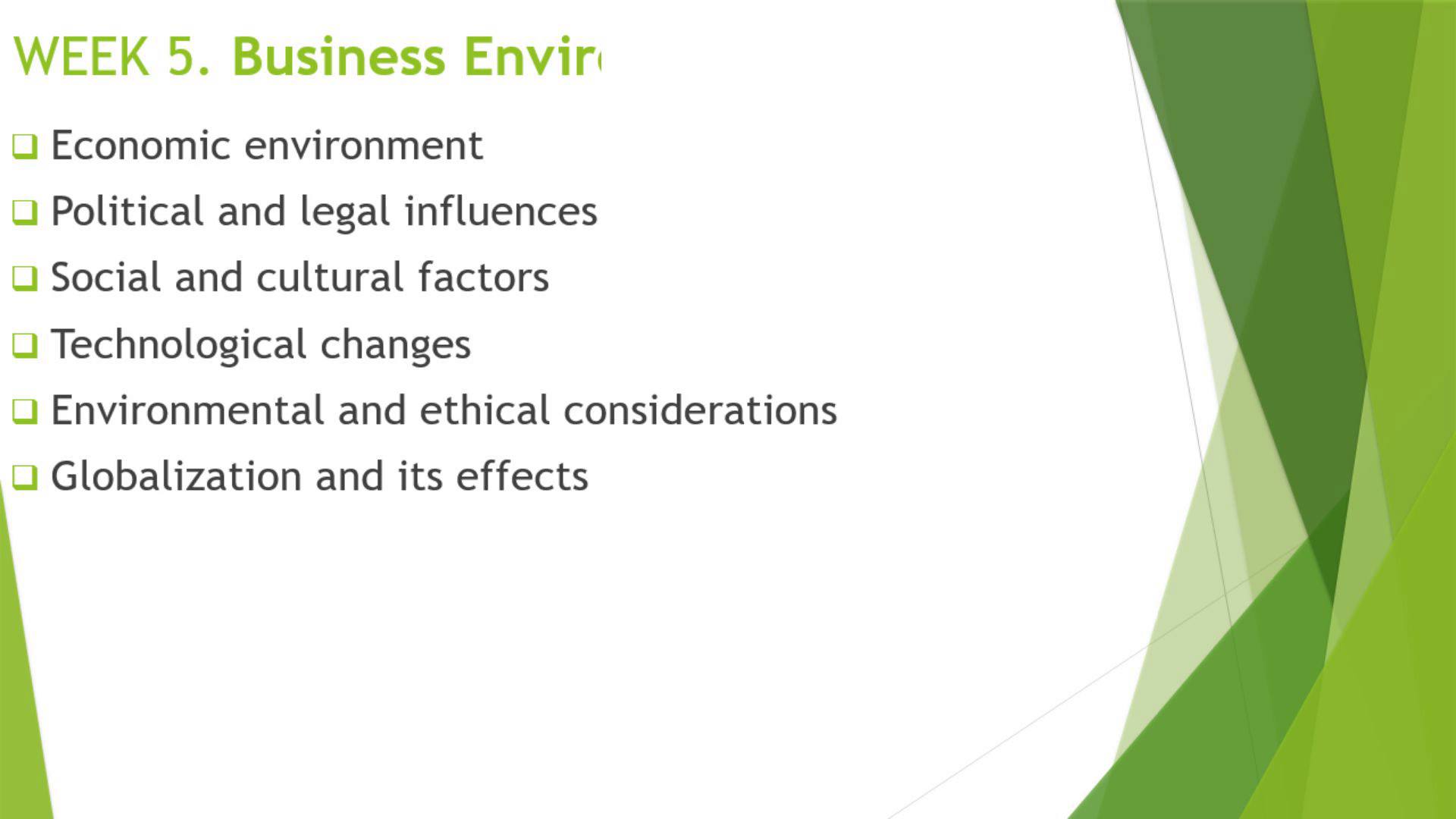
WEEK 5. Business Environment
Scene 1 (0s)
WEEK 5. Business Environment. Economic environment Political and legal influences Social and cultural factors Technological changes Environmental and ethical considerations Globalization and its effects.
Scene 2 (20s)
Economic factors such as inflation, interest rates, economic growth, and unemployment influence consumer spending and business investment decisions. For example, high inflation may reduce consumer purchasing power, while low interest rates can encourage borrowing and expansion. Political and Legal Influences Government policies, regulations, and legal frameworks affect how businesses operate. This includes tax laws, trade restrictions, labor laws, and political stability. Changes in these areas can create opportunities or impose constraints on businesses.
Scene 3 (1m 0s)
Social and Cultural Factors Demographic shifts, lifestyle changes, cultural values, and social trends impact consumer behavior. Businesses must adapt their products, marketing, and operations to align with societal expectations and cultural preferences. There is growing emphasis on sustainability and ethical business practices. Consumers and regulators increasingly expect businesses to minimize environmental impact and operate responsibly. Technological Changes Rapid technological advancements create new business opportunities but also disrupt existing industries. Companies need to innovate and adopt new technologies to remain competitive and meet evolving customer needs. Environmental and Ethical Considerations There is growing emphasis on sustainability and ethical business practices. Consumers and regulators increasingly expect businesses to minimize environmental impact and operate responsibly.
Scene 4 (2m 2s)
Globalization refers to the increasing interconnectedness of countries through trade, investment, information, and migration. It has expanded market access, boosted economic growth, facilitated cultural exchange, and accelerated technological progress. However, it also introduces competition and complexity in managing global operations. Positive Effects: 1.Increased Trade: Greater access to international markets. 2.Economic Growth: Boosts GDP and creates jobs in developing countries. 3.Cultural Exchange: Promotes diversity and understanding between cultures. 4.Technological Advancement: Facilitates the spread of technology and innovation. 5.Lower Prices: Increased competition can lead to lower prices for consumers..
Scene 5 (3m 0s)
Negative Effects. 1.Job Displacement: Companies may move production to countries with lower labor costs. 2.Income Inequality: Widens the gap between rich and poor nations. 3.Environmental Degradation: Increased production and transportation lead to pollution. 4.Cultural Homogenization: Dominance of Western culture can erode local traditions. 5.Exploitation of Labor: Unethical labor practices in some developing countries. Examples Multinational corporations (MNCs) operating worldwide. International trade agreements (e.g., WTO, NAFTA). Global supply chains spanning multiple countries..